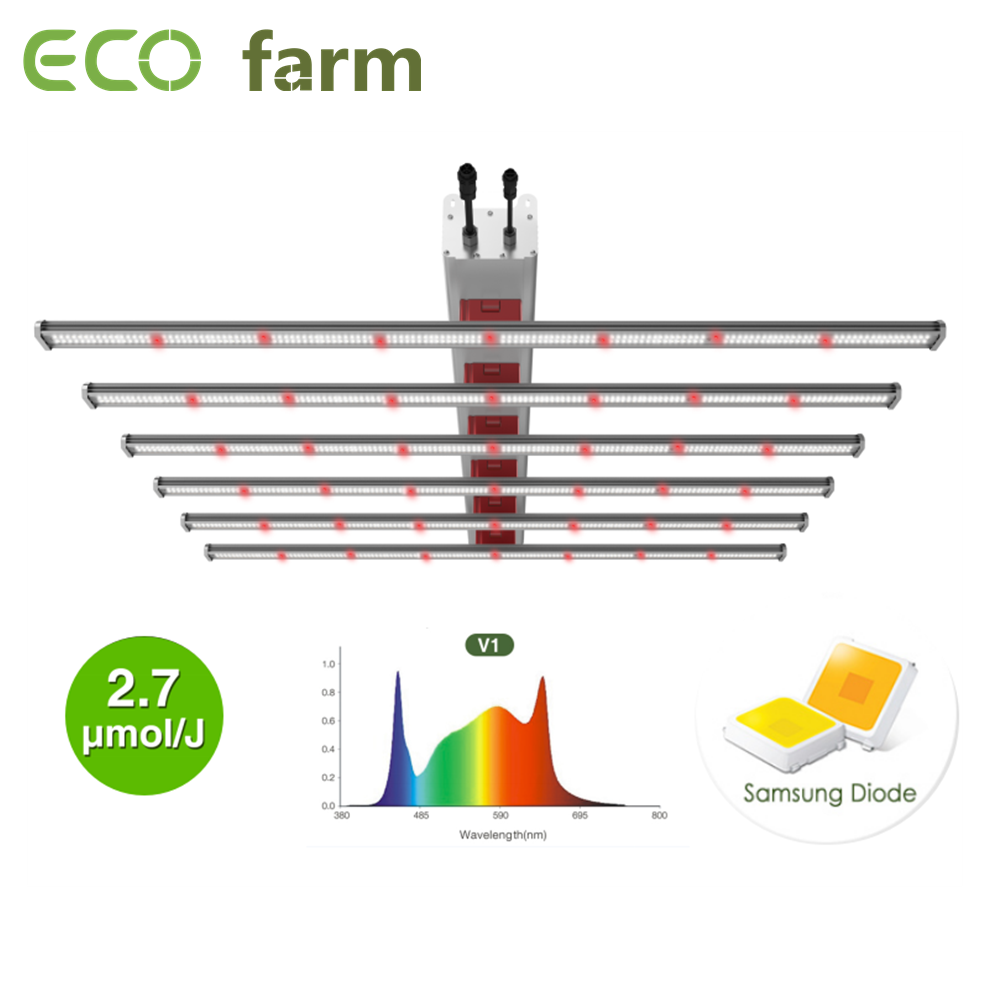How Many PPFD Do Plants Need? 2021 Update
As a grower, you have a lot of things to care about. Plant lifecycles, grow light positioning, heat, light spectrum, space and market are all incredibly important factors to consider when building a greenhouse or grow area.
As you explore this world and unpack the different metrics and grow lights and systems that you need for optimum yields and healthy, flavoursome plants, you will hit a wall of acronyms. These acronyms – PAR, PPF, PPFD – sit alongside terms like watts, lumens, photon efficiency and LUX, and they are all critical to helping you create the perfect grow space and yield.
What is PPFD (Photosynthetic Photon Flux Density)?
The third part of the PAR equation is PPFD. This stands for photosynthetic photon flux density and it does more than just measure the PPF, it also measures the surface area. PPFD is measured in micromoles per square metre per second (µMol/m2/S) which establishes exactly how many PAR photons are landing on a specific area. PPFD is all about how many of those essential, photosynthetic photons are actually impacting the grow area and how well those lights are working when it comes to their output.
For the grower, it’s important to make sure that the PPFD data you get from your grow light manufacturer is accurate and covers the entire area of the light. It’s relatively easy to massage this information, so consider factors such as distance from the light source, a number of measurements that account for the average, and the minimum/maximum ratio before you buy. This is another great reason why you should work with a trusted grow light partner who can offer you relevant metrics and the right tools to fully benefit from PAR, PPF, and PPFD.
Light intensity drops off by the inverse square with increasing distance. This is known as the Inverse-Square Law. As an example, a source of light striking a 1 m2 surface at 1 meter drops off to 25% of the intensity over a distance of 2 meters, down to 11.11% intensity at 3 meters and only 6.25% of the original intensity at 4 meters! The closer the light to the plant, the more photons will strike the leaves. Backing the light away by just a little amount can have a significant impact on PPFD levels that reach your plants. Furthermore, the leaves off to the sides and corners of the light footprint and below the canopy will be receiving the least light since these areas are the farthest from the light source.
An interesting feature of LED grow lights is that the diodes can be fitted with secondary lenses to focus the light and increase intensity. Secondary lenses, along with the effects of light contribution from other diodes, can actually mitigate the effects of the Inverse-Square Law up to certain distances when used in solo. Therefore, an LED grow light may hold the same light intensity a few feet away from the fixture and only then start to drop off. The same cannot be said about other types of fixtures that scatter light in all directions such as MH, HPS and CMH bulbs. Note: When multiple MH, HPS or CMH bulbs are used in a grow they will also hold their intensity at far distances due to 'light contribution' from adjacent fixtures.
Then let me recommend some best LED grow lights.
ECO Farm ECO-Net 680W/1000W Fordable Samsung 301B Chips LED Grow Light

Description:
ECO Farm ECO-Net provides highly efficient spectrum with a healthy red-to-blue ratio to drive photosynthesis Light energy between 500-599nm, which penetrates deeper into the plant canopy promoting photomorphogenic responses. High color rendering "white" light aids to rapidly identify potential threats to your crop and provides superior working conditions and safety for personnel. Ideal for both flowering and vegetative production.
- 180°folding design, low shipping cost and easy installation.
- Excellent heat dissipation structure design.
- Al6061 alloy allows high-temperature resistance and corrosion resistance.
- Full-spectrum meets every stage of plant growth.
- High PPE up to2.73-2.75umol/J.

Description:
1. Use Samsung high bin LEDs, ultra high PPFD, replace HPS 600W and 1000W perfectly
2. 660W /760W/ 900W/ multiple wattage optional
3. High lighting effect, 90% led grow light will be absorbed by plant, but to the tradition HPS light and MH light, its effect only 8% - 10%.
4. LED MODEL Meteor Storm is a high performance & affordable top-lighting solution for horticulture. Designed for applications requiring efficient,precise and uniform levels of PPFD.
ECO Farm ECOZ Pro 700W/1000W LED Grow Light Strips With Samsung 301H Chips Separately UV+IR Control

Description:
- ECO Farm ECOZ Pro 700W/1000W series was the latest trend and most popular for its good design and ease of use.
- It is a perfect top-lighting solution for commercial horticulture cultivation, or a full-cycle top-lighting solution for home hobbyists cultivating.
If you have any other question about PPFD or lights, welcome to visit our website: ecofarm.ca
Our emails address is: business@ecofarm.ca
Contact:

